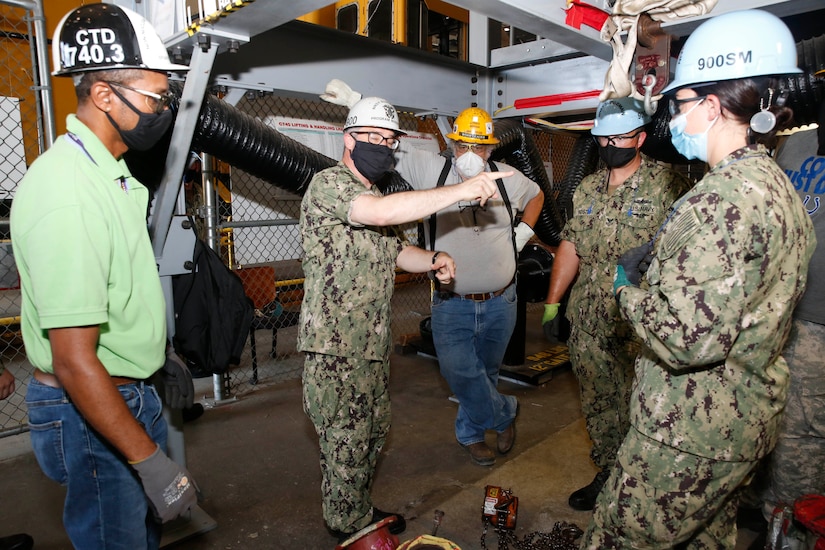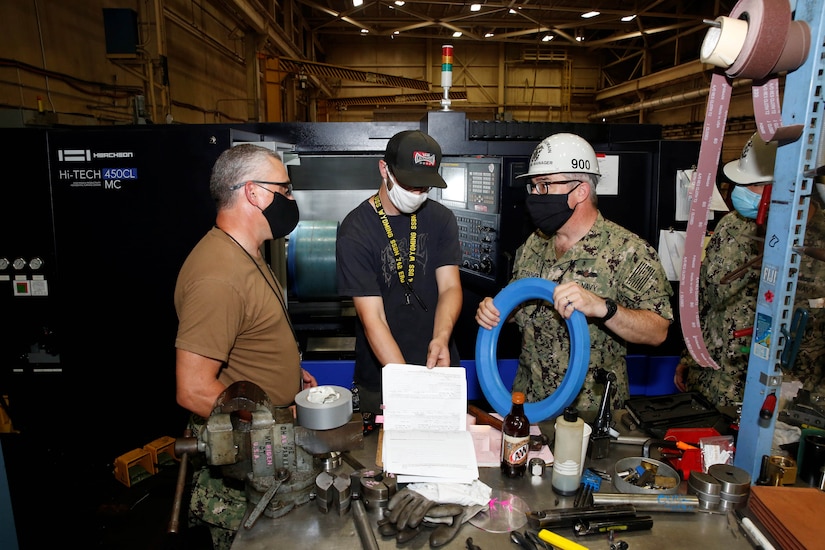The Norfolk Naval Shipyard's mission is to support the U.S. Navy by fixing ships and submarines and returning them to the fleet. This goal became more challenging to meet with the emergence of COVID-19 and its impact on shipyard employees. In early July, SurgeMain stepped up to assist with the first phase by mobilizing more than 480 Navy Reserve sailors.

"This mobilization is Naval Sea Systems Command's [NAVSEA] COVID-19 recovery response," said Navy Lt. Cmdr. Manny Sayoc, SurgeMain program manager. "Our program has been around for 15 years, and this is the first time we have been mobilized to help out with shipyard production."
The sailors reported for duty in several phases. More than 1,620 SurgeMain sailors are being mobilized in total to the four public naval shipyards based on production resource demands.
"This initiative required a culmination of several months of co-preparation between the shipyards, Navy Reserve units, the Secretary of the Navy's office, and many major commands in between," Sayoc said. "Countless days of planning and coordination were spent considering production, personnel administration and benefits, support and leadership staff, logistics and transportation, supply, berthing, training, and COVID-19 protective measures."
Sayoc pointed out that many of the sailors have come from across the country on short notice — a lot of them under the minimum mandatory notification period.
"They have left their civilian jobs, said goodbye to their family and loved ones, and jumped into the fray of uncertainty to serve their country right here in Portsmouth, Virginia," he said.
With the help of its local reserve units, SurgeMain called upon its most senior local sailors first, some of whom have worked in similar civilian positions.
"We wanted to provide deckplate leadership and guidance of local knowledge to help our incoming reserve workforce," Sayoc explained.
As part of the mobilized force, several people also went on short-term military orders to serve as instructors, drivers, administrative staff and logistical support.

"We never expected to have to pull off a project as big as this, but we had a strong leadership staff and everyone wanted this mobilization to be a success," he said.
Safeguarding the reservists against COVID-19 was among the most unique and challenging components in engaging this initiative.
"In order for us to help backfill this hole of work, we have — and still need to manage our precautionary methods of minimizing exposure of transmission while staying on task," said Navy Capt. Jonathan Jett-Parmer, SurgeMain east regional executive officer. "Methods to do so include managing bubble-to-bubble transitions, putting people on restricted movement when it is applicable, providing personal protective equipment, and all sorts of means to protect our SurgeMain sailors and the community," Sayoc added.
Despite these challenges, the drive to help accomplish the mission is still present with SurgeMain's personnel, and the goal of the mobilization is not lost on them.
"These sailors are on orders to be here for 15 months," Jett-Parmer explained. "It is going to be a long mobilization to help dig the Navy out of this workload caused by the pandemic, but it's the right thing to do."
There is one goal that SurgeMain has when it comes to this mobilization: fix Navy ships and get them back to the fleet.
"We are in a time of crisis," Jett-Parmer explained. "There has been a large [number] of irreplaceable man-days lost because of this virus."
"That is the purpose of this mobilization," Sayoc added. "Our program has been training and preparing for such a situation such as this."
SurgeMain sailors might not be in the shipyard long-term, but they are here to help while they are at NNSY. Civilians and SurgeMain sailors will fight the good fight against this backlog and work together to accomplish the mission.
(Hannah Bondoc is assigned to the Norfolk Naval Shipyard)






No comments:
Post a Comment